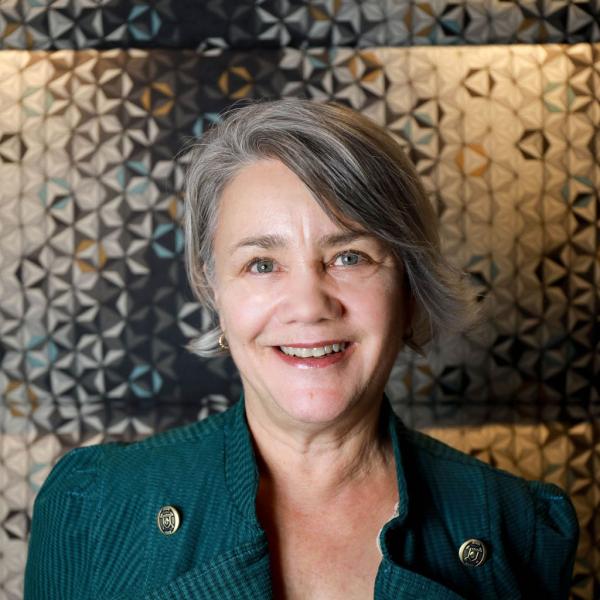An attempt at sharing is caring
Shared governance at Hamline has raised concerns about the level of transparency as the school continues to move into the future.
October 19, 2021
As part of an institution of higher learning, Hamline’s academic departments and programs experience reviews, feedback and changes constantly. Most recently, these changes have sparked conversations about shared governance and transparency at Hamline after such things as the CLA expedited program review of the 2020-21 school year and operating throughout the COVID-19 pandemic.
As defined by the American Association of University Professors, shared governance refers to the existing structure and process that faculty, staff, administrators, and trustees participate in when governing an institution of higher learning. At Hamline, this impacts such things as decisions about departments, programs, curriculum and other conversations.
Lately, the topic of shared governance has been scrutinized in relation to how it plays out at the university.
“Shared governance is something that both faculty and our administrators talk a lot about, but my experience is that there is a different perception of what shared governance is,” Binnur Ozkececi-Taner, professor of political science, said. “From the faculty’s perspective, there is a need for faculty, staff and students to be involved as much as possible in the decision making process. From the administration’s perspective, I think it is more about sharing information about certain policies.”
Hamline has a plethora of committees covering many spheres of university needs where faculty is generally represented, while sometimes lacking decision-making power.
As of now, there are no faculty or students that are a part of the Board of Trustees, one of the deciding players in shared governance. One of the Board of Trustees largest roles is fiscally supporting the university.
“Differences in the weight of each group’s voice on a particular issue should be determined by the extent of its responsibility for and expertise on that issue,” AAUP’s website writes.
Chair and professor of the English Department Mike Reynolds, has played many roles at Hamline in both a faculty and administrative capacity. He recognizes the ways in which tension has arised.
“I would say I continue to be frustrated by the lack of communication and clarity about the way things work. Communication, I think is a consistent problem across the whole time I’ve been here but I do feel like it’s been a challenge, the last couple of years,” Reynolds said. “I also think there’s a challenge around consultation versus collaboration, some administrators would say that the role of faculty in shared governance is to consult, but not necessarily to be part of the actual decision making…Meaningful collaboration, meaningful collective decision making, should happen in various places.”
Recently the approach that has been taken regarding shared governance and decision making as Hamline faces increased market pressures, is what distinguished professor David Schultz describes to be a “top/down” approach. This is in line with something hierarchical, where many professors feel a collaborative approach would be more beneficial.
Schultz also hopes for a different clarity from the “top” and down. With more transparency from the Board of Trustees and administrators.
“[Our shared governance] is not as strong as it could be, and it comes at the detriment of the university,” he said. “We have to commit ourselves as an institution to be more transparent about goals and about what the financial situations are regarding a whole bunch of different things. [That’s] a good first step in terms of improving governance and in terms of saying that, ‘okay, we’re going to solicit input and information from, again, all the relevant constituencies,’ as a way of strengthening the decision making.”
The benefit of the shared governance model is irreplaceable in many faculty members’ eyes, acknowledging that there are aspects of Hamline’s that need improvement.
“If we don’t have shared governance, I think the relationship with administration and faculty would be conflictual, and we don’t want that. Having a good model of shared governance is going to make Hamline University a lot stronger than it already is,” Ozkececi-Taner said. “[It] gives the idea and the perception that faculty, staff, students and our administrators work collaboratively. So that model is the model that we should be aspiring to achieve. I don’t think that we are there. I think there needs to be a good faith effort from the administration, and also from faculty so that we could work together to make Hamline, a better place for everyone.”
Interim ProvostAndy Rundquist has also worked in many positions at Hamline and feels similarly about shared governance after the experiences he has had. Part of his role as Interim Provost is he works to help identify the areas Hamline could improve going forward.
“I think the broad strokes of our system right now are exactly the ingredients we need, and I think we can always improve,” Rundquist said. “There are some steps where the process transparency just hasn’t existed before, so we need to launch some new communication paths but that’s not major change.”
Ideas for how the shared governance model can improve include emphasizing collaboration over partisan positions or hierarchical approaches, transparency in decisions and processes, wider ranges in representation and a communal perspective on addressing challenges.
“Shared governance can’t simply be vetoing decisions you don’t like. It has to be taking accountability for the kinds of challenges that we face together,” ” Reynolds said. “I would like to see increased enhancement of some of the structures we have, for instance, I would like to see representation on the board. I would like to see student representation on the board. That seems to me, a crucial step towards a stronger model of shared governance with all stakeholders….if we actually want shared governance in various ways, it should just be consistent across all stakeholder groups.”






